500 g
Showing 301–350 of 521 results
-

MP Alumina B – Super I for dioxin analysis
$127.57 Add to cart View Product DetailsExtremely constant deactivation behavior. Commonly used for purification processes requiring the highest precision and reproducibility
-

MP Alumina B 32-63 um, active, basic pH
$120.06 Add to cart View Product DetailsMP Alumina B 32-63 um, active, basic pH
-

MP Alumina B, Activity I
$110.41 Add to cart View Product DetailsMP EcoChrom™ Alumina B, Activity I are a good “all-round” adsorbents for laboratory use as well as for industrial use. They can be adjusted to lower activity by the addition of polar media, preferably water, but also higher alcohols, e.g. glycol or glycerol can be used. An oxide of aluminum, occurring in nature as various minerals such as bauxite, corundum, etc. It is used as an adsorbent, desiccating agent, and catalyst, and in the manufacture of dental cements and refractories.
-

MP Alumina N, 32-63 um, Active
$164.75 Add to cart View Product DetailsMP EcoChrom™ Alumina N is an amphoteric oxide. It is commonly referred to as alumina (α-alumina), aloxide, or corundum in its crystalline form, as well as many other names, reflecting its widespread occurrence in nature and industry. An oxide of aluminum, occurring in nature as various minerals such as bauxite, corundum, etc. It is used as an adsorbent, desiccating agent, and catalyst, and in the manufacture of dental cements and refractories.
-

MP Alumina N, Act. I neutral pH, 63-200 um
$111.49 Add to cart View Product DetailsMP EcoChrom™ Alumina is essentially aluminum oxide, Al2O3, occurring in nature as minerals bauxite, bayerite, corundum, etc.
-

MP Alumina N, neutral pH
$163.07 Add to cart View Product DetailsMP EcoChrom™ Alumina N is an amphoteric oxide. It is commonly referred to as alumina (α-alumina), aloxide, or corundum in its crystalline form, as well as many other names, reflecting its widespread occurrence in nature and industry. An oxide of aluminum, occurring in nature as various minerals such as bauxite, corundum, etc. It is used as an adsorbent, desiccating agent, and catalyst, and in the manufacture of dental cements and refractories.
-

MP Alumina N, Super I
$116.77 Add to cart View Product DetailsMP EcoChrom™ Alumina N, activity Super I shows a sorbtion capacity approximately twice as high as that of MP EcoChrom™ Alumina N, Activity I. Their inital activity is kept in a very narrow range and their dactivation behavior is extremely constant. MP EcoChrom™ Alumina N, activity Super I are commonly used for purification processes of all kinds, including sample preparation for pesticides, and environmental analysis, solvent purification and all kinds of chromatography, requiring the highest precision and reproducibility.
-

MP Alumina R for isotope, acid pH, 63-200 um
$120.77 Add to cart View Product DetailsMP EcoChrom™ Alumin R is an acid alumina,developed for use in isotope chemistry.
-

MP Silica 18-32, 60A
$167.68 Add to cart View Product DetailsMP Silica 18-32, 60A
-

MP Silica 200-500 um, active 60A
$132.77 Add to cart View Product DetailsIn addition to the convential silica, MP Biomedicals produce active silica. These MP EcoChrom™ Silica, active, exhibit a well defined high inital activity in addition to the good properties of MP EcoChrom™ Silica. The initial activity of MP EcoChrom™ Silica, active, corresponds to the activity of Alumina activity I.
-

MP Silica 32-100, active 60A
$154.53 Add to cart View Product DetailsMP Silica 32-100, active 60A
-

MP Silica 40-63 um, 60A
$29.34 Add to cart View Product DetailsMP Silica 40-63 um, 60A
-

MP Silica 63-100 um, 60A
$155.94 Add to cart View Product DetailsBulk Density: 0.8 g/ml
-

MP Silica 63-200 um, 60A
$116.33 Add to cart View Product DetailsMP EcoChrom™ Silica, the chemical compound silicon dioxide, also known as silica (from the Latin silex), is an oxide of silicon with the chemical formula SiO2 with a mean pore size of 60Å and particles size of 63-200μm. MP silica are free of particles outside the standard range. The irregular shape of MP Silica permits the easy packing of column permeability and plate number. They allow easy switching from one sieve cut to another, offering an easy way to change the chromatographic methods. It has been known for its hardness since ancient times. Silica is most commonly found in nature as sand or quartz, as well as in the cell walls of diatoms.
-

MP Silica DCC, 50-200 um, 60A
$134.95 Add to cart View Product DetailsMP Silica DCC, 50-200 um, 60A
-

MP Silica G-TLC
$122.64 Add to cart View Product DetailsParticle Size: 5-15 μm
-

MP Silica Gf- TLC, particle size: 5-15 umcontains Fluorescen
$128.14 Add to cart View Product DetailsMP EcoChrom™ Silica, GF-TLC, contains fluorescent indicator F254 and gypsum. They are produced from the same highly standardized raw material as the MP EcoChrom™ Silica for column chromatography. They are available with or without binder and with or without fluorescent indicators.
-

MP Silica, 100-200 um, 60A
$129.71 Add to cart View Product DetailsMP EcoChrom™ Silica, the chemical compound silicon dioxide, also known as silica (from the Latin silex), is an oxide of silicon with the chemical formula SiO2 with a mean pore size of 60Å and particles size of 100-200μm. MP silica are free of particles outside the standard range. The irregular shape of MP Silica permits the easy packing of column permeability and plate number. They allow easy switching from one sieve cut to another, offering an easy way to change the chromatographic methods. It has been known for its hardness since ancient times. Silica is most commonly found in nature as sand or quartz, as well as in the cell walls of diatoms.
-

MP Silica, 32-63 um, 60A
$141.83 Add to cart View Product DetailsMP EcoChrom™ Silica is an oxide of silicon. Their sieve cuts are optimized according to the sieve range of the German Industrial Standard (DIN). The irregular shape of this product permits easy packing of columns of different sizes and optimization of column permeability and plate number. They allow easy switching from one sieve cut to another, offering an easy way to change the chromatographic methods.
-

MP SILICA, Active
$111.85 Add to cart View Product DetailsMP SILICA, Active
-

MP Silica, Active, 100-200 um, 60A
$131.35 Add to cart View Product DetailsMP EcoChrom™ Silica is an oxide of silicon.
-
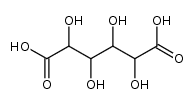
Mucic acid
$215.38 Add to cart View Product DetailsMucic acid
-

N-Acetyl-L-cysteine, >96%
$520.15 Add to cart View Product DetailsN-Acetyl-L-Cysteine
-

N-Lauroylsarcosine, ~95%
$248.64 Add to cart View Product DetailsN-Lauroylsarcosine
-

N-Lauroylsarcosine, sodium salt
$192.45 Add to cart View Product DetailsN-Lauroylsarcosine is an anionic detergent.
-

N-Lauroylsarcosine, sodium salt
$427.13 Add to cart View Product DetailsN-Lauroylsarcosine, Sodium Salt
-

N-Methyl-D-glucamine
$139.04 Add to cart View Product DetailsN-Methyl-D-Glucamine
-

N-Propyl gallate
$211.30 Add to cart View Product DetailsN-Propyl Gallate
-

NIACINAMIDE, 98-100%
$58.17 Add to cart View Product DetailsNIACINAMIDE, 98-100%
-

Nickel Chloride Hexahydrate
$106.70 Add to cart View Product DetailsNickel Chloride Hexahydrate
-

Nickel chloride, hexahydrate
$111.98 Add to cart View Product DetailsNickel Chloride Hexahydrate
-

Ninhydrin, monohydrate
$942.30 Add to cart View Product DetailsNinhydrin Monohydrate
-

Nitrilotriacetic Acid, ACS
$532.74 Add to cart View Product DetailsNitrilotriacetic Acid, ACS
-
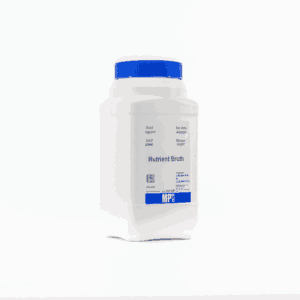
Nutrient broth
$116.97 Add to cart View Product DetailsGeneral purpose medium used for cultivating a broad variety of fastidious and non-fastidious microorganisms with non-exacting nutritional requirements.
-

Oleic acid, Practical Grade
$69.99 Add to cart View Product DetailsOleic acid, Practical Grade
-

Orotic acid, monohydrate
$220.47 Add to cart View Product DetailsOrotic Acid Monohydrate
-
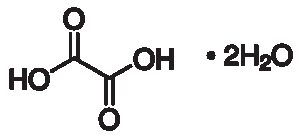
Oxalic Acid Dihydrate, ACS
$151.05 Add to cart View Product DetailsOxalic Acid Dihydrate
-

p-Aminobenzoic Acid
$87.55 Add to cart View Product DetailsP-Aminobenzoic Acid
-
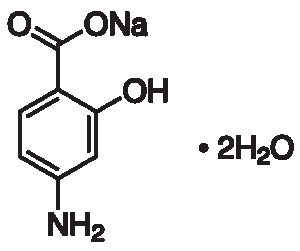
p-Aminosalicylic Acid Sodium Salt Dihydrate
$184.97 Add to cart View Product DetailsP-Aminosalicylic Acid Sodium Salt Dihydrate
-

p-Hydroxybenzoic acid
$90.30 Add to cart View Product DetailsP-Hydroxybenzoic Acid
-

p-HYDROXYBENZOIC ACID HYDRAZIDE
$792.73 Add to cart View Product Detailsp-HYDROXYBENZOIC ACID HYDRAZIDE
-

p-Toluenesulfonic acid, monohydrate
$65.75 Add to cart View Product DetailsP-Toluenesulfonic Acid, Monohydrate
-

Pancreatin 4x, USP
$301.81 Add to cart View Product DetailsPancreatin is a mixture of digestive enzymes produced by the exocrine cells of the pancreas. It is composed of amylase, lipase and protease. The trypsin found in pancreatin works to hydrolyze proteins into oligopeptides; amylase hydrolyzes starches into oligosaccharides and the disaccharide maltose; and lipase hydrolyzes triglycerides into fatty acids and glycerols.
-

Pancreatin 8x
$399.40 Add to cart View Product DetailsPancreatin 8X
-
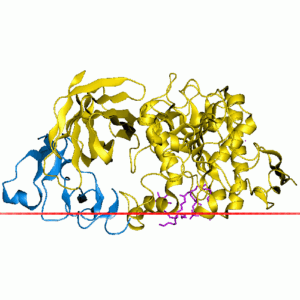
Pancreatin, USP
$188.74 Add to cart View Product DetailsPancreatin, U.S.P.
-

Papain, technical grade, >1750 USP U/mg
$384.05 Add to cart View Product DetailsPapain
-

Paraformaldehyde
$61.63 Add to cart View Product DetailsParaformaldehyde
-

Pectin
$249.44 Add to cart View Product DetailsPectin
-

Pectin from apple
$376.59 Add to cart View Product DetailsPectin
-
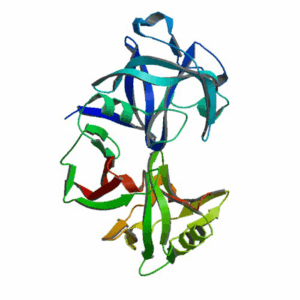
Pepsin, 1:10,000
$639.60 Add to cart View Product DetailsAcid protease used to digest proteins. Commonly used in the preparation of Fab fragments from antibodies. Contains the “cathepsin” component which has milk curdling activity. Broad range of substrate activity and demonstrates an esterase activity






